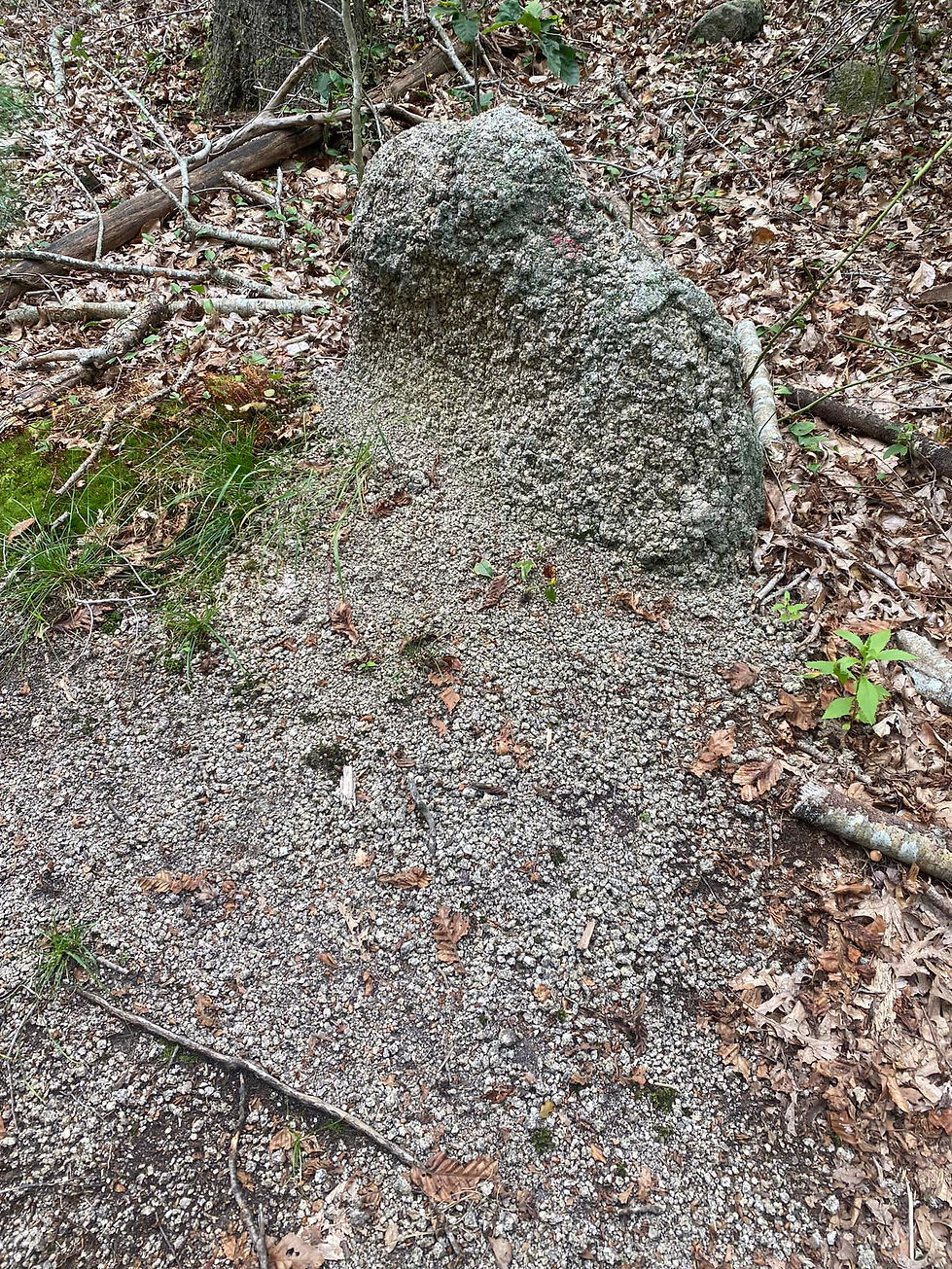
Why is Redstone Arsenal, Alabama not Yellowstone? Yesterday I discovered "meteor deteriorate." Just outside the crater wall on the AL/TN border. The iron from the meteor is diluted more and becomes particle soluble and is mixed with impacted material. The top specimen is shocked limestone with a weak mix of diluted rubble splatter. It is sitting on a weak mix of unconsolidated impact material with a hyper-velocity quartz thin plane insertion! Somehow this weak mix was still close enough to receive a hyper-velocity blast. Clearly there are successive stages occurring quickly. Overall the iron spray just becomes the red color to the soil in Madison county, AL.
Classic Title

Now let's take a look at it closer.

The same thing is occurring in the picture below. Also thin plane quartz insertion with a weak mix of meteor and more impacted material in the mix. Also I noted elongated shapes as deterioration detritus.

These loosely consolidated elongated shapes are still in the process of falling apart after all this time and being in a plowed cotton field alluvial Elk River plane.

Here is one below actually falling apart. Notice how the iron binder has leached out into the soil.

You find weak unconsolidated balls of just the weak iron mix binder leaching away and you can crumble them in your hand.

Below is the same kind of stuff five miles inside the SW crater. It is so shock metamorphic it only loses some iron on surface over time.

I also found new mineral oxide splatter effect with fading and edge lines.

A few of the first specimens I encountered. They are soft and even eroding on surfaces.

Same location this specimen below has a sweeping carved exterior and appears to have been "cooked" a bit with exterior wrinkling. Is this the effect at this distance or was it blasted here? Tiny bits of iron splatter too. Ft. Payne chert.

The specimen below is from the north crater floor along Richland Creek and HW 31. It is a conglomeration melted together and overshocked. I broke it apart with my hands. It was fused well inside but beyond boiling point of materials! That would be in the range of 3,000 + degrees F.

Same rock shown below with the exterior rubble composite to interior over shocked powder composition. High shock can have a bleaching effect.

Soft rock impactites are made by the vapor mist and crumble easy.


This specimen posted for identification is granite like but softer. It is composed of a particle storm and is partially formed into connected constellations. I think it is a vapor umbrella impactite cusp. Less shock but in the vapor cloud zone.

So here is the iron from the Frankewing, TN Impact hitting the Highland Rim in Wayne County, TN. It falls into a pebble shore and becomes a binding matrix.

Turkey, photo by Ali Karadeniz - Notice how you have the conglomerate of solids and the sediment. Good theory explains more and better. This strata as explained by the typical sediment geology would say this is an alluvial deposit. But that does nothing to explain why it is not flat, why it has solid rocks generally dispersed, and nano iron. With impact you explain it all. The solids can be created by impact or blasted into an edge which would be a vertical pile up. The iron is because it was vaporized from the center crater impact and is distributed as a mist.

MA Bay Impact, impact material not well compressed. The forensics. First let's note that in situ this is sitting on top as an independent bolder mass. A somewhat recent geological feature. The composition is bits and pieces conglomerate. The matrix binder is not holding and by the look of it could be calcium bentonite ash. I have encountered this before at the edge of the Howell, TN Impact Structure at the border of TN and AL. Rocks that would crumble. As this was an edge effect, I presume it was not subject to the higher pressures. The recent geological surveys offshore MA show gravel like this on the bottom. Take a look at the attached map of the offshore area. Aug. 26, 2024.
Jamie Doris · ·
I was on Cape Ann (MA) today and came across several formations like this. It’s almost like they’re actively crumbling. What causes this? Sorry if this has been covered before. I try to pay attention to the posts.
